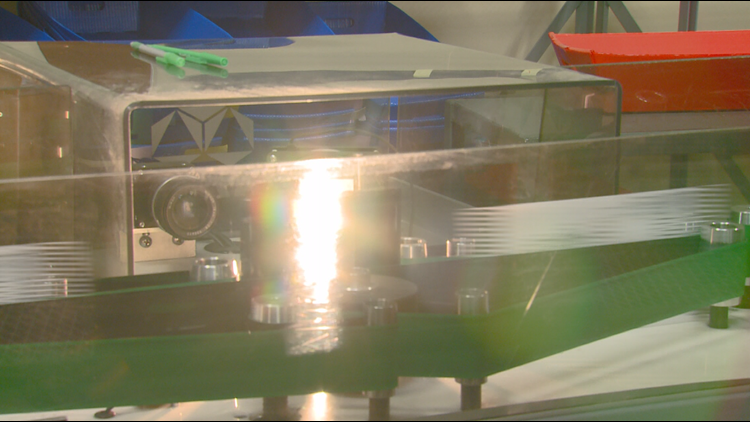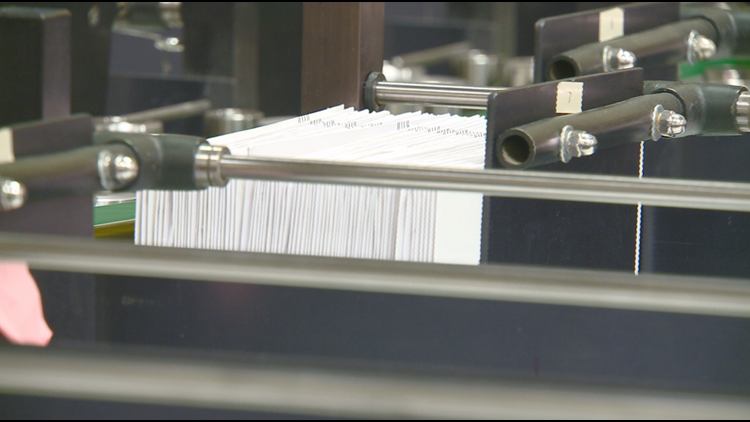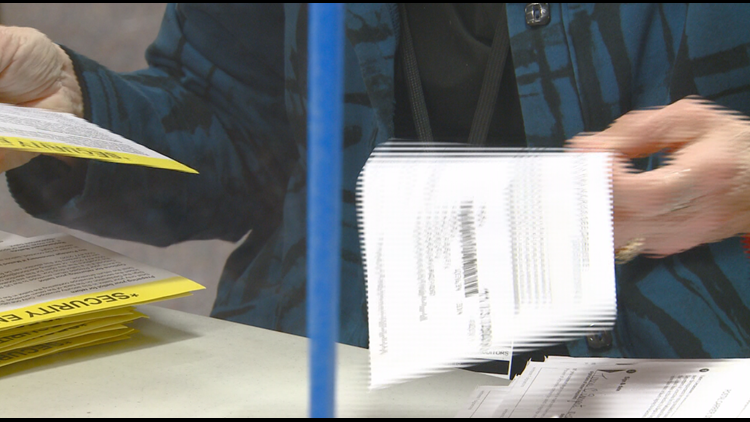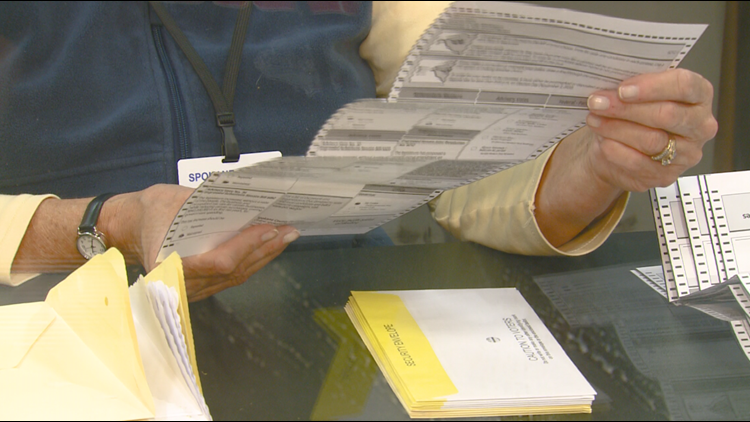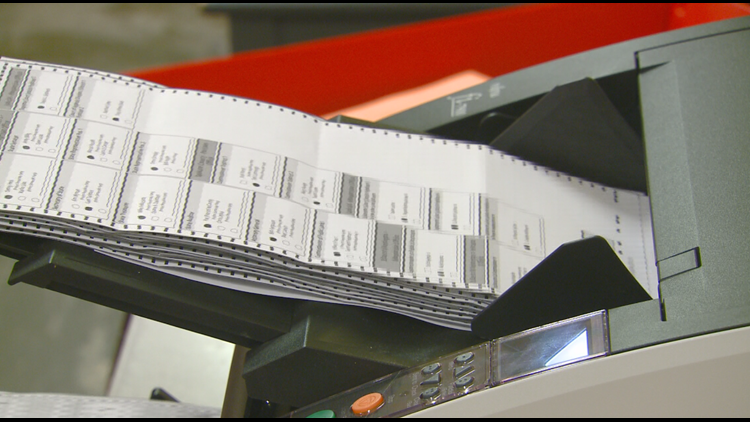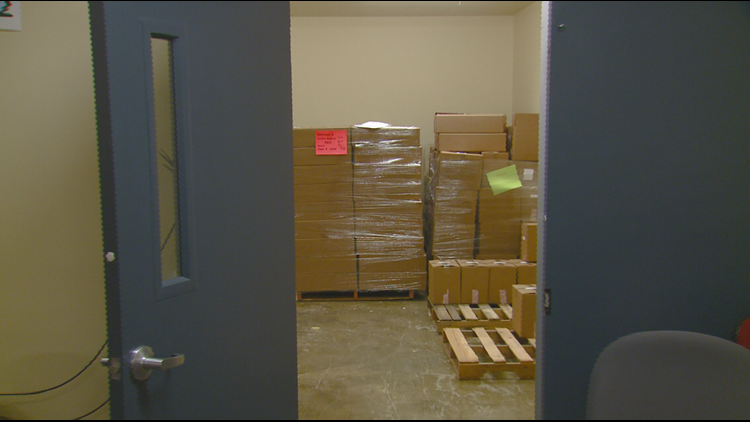SPOKANE, Wash — With only a week to go until Election Day, many Washington voters have already sent their ballots in the mail or placed them in drop boxes.
And some of those voters are wondering exactly what happens to their ballot once it arrives at their local elections office. Who opens the envelope? How is the vote counted? How safe and secret does my ballot remain?
To get answers, KREM took a tour of the Spokane County facility to see each step of the process.
- Ballots arrive at the elections office from the post office or from drop box collections. Workers place the ballots into large trays.
- The ballots take a first pass through the sorting machine. It imprints a date and tracking number on the envelope, then quickly scans it for a signature and other information embedded in a barcode. If there's no signature, or some other error, the envelop is sent to a special stack. If everything is normal, ballots are divided up by legislative district.
- The next step is making sure the signature on the envelope matches the signature on your voter registration form. A worker trained by the Washington State Patrol compares the two images on their computer. If all is good, they okay the ballot. If the signatures don't match, they pass it onto another trained employee. That worker then looks at the physical envelope and compares it to the signature on file. If both workers decide the signatures don't match, then the voter will be sent a form that they'll need to fill out for their ballot to be counted.
- Now it's time for a second pass through the sorter. This time the envelopes get broken down even further, by precinct group. Up to 200 ballots will go together in a tray and stay together for the rest of the process.
- A piece of paper called the control sheet helps workers keep track of those trays and make sure they always have the right number of ballots.
- Now the ballots move to the letter-openers. A worker double checks the count, then finally opens the envelope with the help of a special machine. Then they take out the contents: ballots enclosed in privacy envelopes. If the ballot doesn't have a privacy envelope, the worker will give it one. The bigger envelopes are stored securely and separately, the smaller envelopes go back into the tray and onto the next step.
- Now that the ballots are totally anonymous, they can finally come out of the security envelopes. Workers again double check the count, and then make sure that the ballot is ready for the tabulation machine. They flatten and stack the ballots to make them easier to scan.
- Any ballots that are crumpled, have spills, or otherwise might be hard for the machine to read get set aside. A specialized team of two then fills out the voter's choices on a fresh ballot so it can be tabulated.
- The votes can now at last be counted. The tabulation machine scans all the ballots and saves the images as it tallies.
- If the machine notices something strange, like a mark it can't read, that gets flagged in the computer. Then, two different workers look at the scanned image to determine what the ballot says. If they don't both agree, a supervisor is brought in to make the call.
- Finally, the ballots are boxed up and stored. They're kept for 22 months if there are any federal elections on the ballot, such as for president or Congress. If not, they need only be kept for 60 days.
Here's what happens to your ballot after it arrives at the elections office
The KREM Voter Access Team is working to get you the information and dates you need for the 2020 Election. Click here to view the KREM Voter's Guide. Text the word 'Vote' to 509-448-2000 for important deadlines and information, or text 'Ballot' for links on how to check the status of your ballot in Washington and Idaho.





